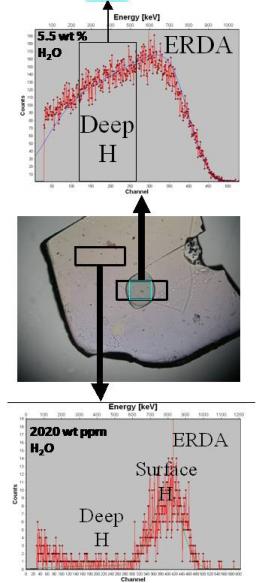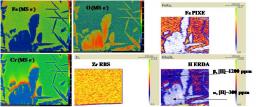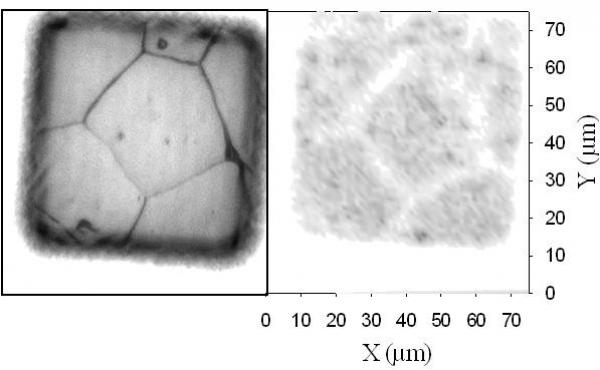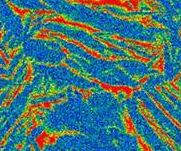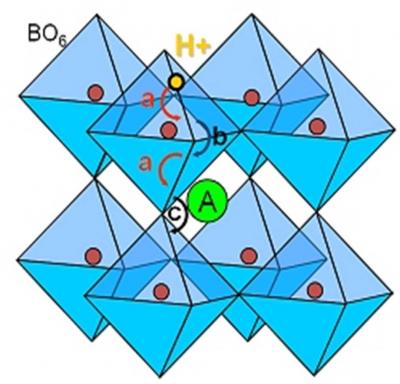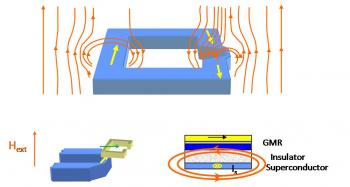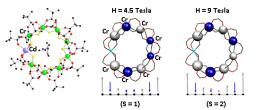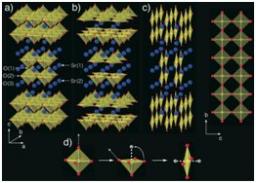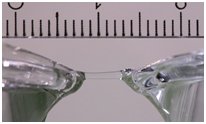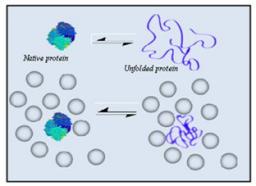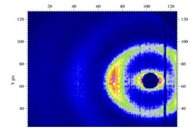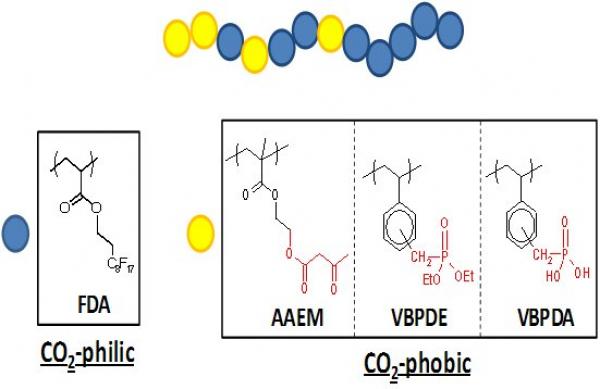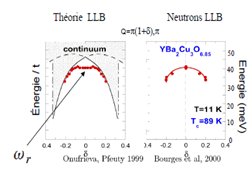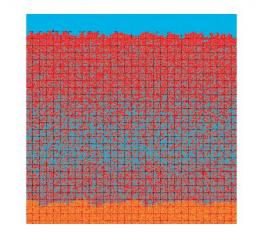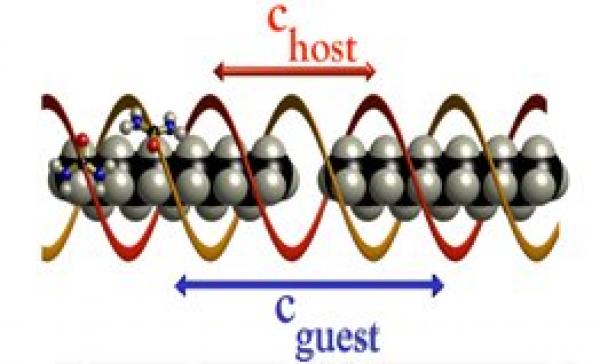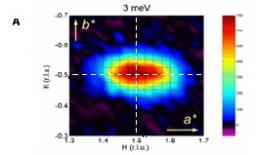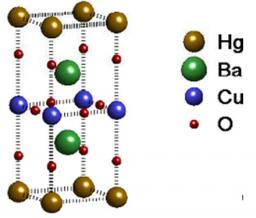Pages scientifiques 2010
Pour pouvoir comprendre le fonctionnement de notre planète, il faut connaître la teneur en fluides (H2O, CO2...) dans les différents réservoirs terrestres (croute, manteau, noyau), les mécanismes et les flux d'échanges entre ces différents réservoirs. La teneur en eau, qui est le fluide principal, dans les échantillons géologiques est donc une donnée cruciale dans le domaine des Sciences de la Terre, l'eau ayant une influence fondamentale sur les propriétés physico-chimiques du manteau terrestre et de la croute. Des mesures d'hydrogène par ERDA (Elastic Recoil Detection Analysis) ont été effectuées à l'aide de la microsonde nucléaire du LEEL pour quantifier l'hydrogène dans des échantillons naturels (minéraux mantelliques, verres volcaniques et inclusions dans ces verres) ou synthétiques (élaborés en vue d'étudier les différents phénomènes, notamment dans les zones profondes de la terre pour lesquelles il n'est pas possible de prélever d'échantillons).
En parallèle, la teneur en eau a également été mesurée dans des échantillons de météorites martiennes. Outre une meilleure connaissance de la planète Mars elle-même, ces informations permettront d'effectuer un parallèle avec les mesures de roches similaires du manteau terrestre et, également, de déduire des indications sur l'histoire de la formation de la Terre.
Alors que la mesure d'échantillons contenant de l'ordre du % massique avait déjà été effectuée, l'amélioration du dispositif expérimental et du protocole de préparation des échantillons ont permis d'abaisser la limite de détection à 80 wt ppm H2O (10 wt ppm H ; 180 at ppm H), mesuré dans une olivine déshydratée. Le dosage de l'hydrogène a pu être étendu aux NAMs (Nominaly Anhydrous Minerals), ouvrant de nouvelles perspectives d'études.
Considérée maintenant comme une méthode de référence, l'ERDA a été utilisée pour déterminer les coefficients de calibration utilisés pour les mesures par spectroscopie infra-rouge (FTIR) ainsi que pour les mesures par sonde ionique (SIMS)
Des échantillons de gaines irradiées, ayant séjourné 5 à 7 cycles dans un cœur de réacteur du parc français, ont été amenés au laboratoire. Comme il s'agit d'échantillons radioactifs, la mesure est effectuée dans CASIMIR (Chambre d'Analyse de Surfaces et d'Interfaces de Matériaux IRradiants, voir : CASIMIR), installation située en zone contrôlée permettant l'analyse par faisceau d'ions d'échantillons actifs. Lors du refroidissement dans le cœur, il y a formation d'hydrures circonférentiels, plus ou moins importants, visibles par micrographie. L'analyse effectuée par ERDA a permis, dans un premier temps, la quantification de l'hydrogène dans ces hydrures.
Lors d'un APRP, le cœur du réacteur est vidangé. Le refroidissement n'étant plus assuré, la température de gaine monte très rapidement, puis décroît lentement, la réaction en chaîne n'étant plus entretenue. Après une durée variable en fonction du scénario d'accident, allant de quelques minutes à une demi-heure, il y a un renoyage du cœur. Cette situation a été simulée dans les laboratoires de DEN/DMN/SRMA par l'utilisation d'une gaine préhydrurée à 600 wt ppm H, représentative de la teneur en fin de vie du crayon. Elle est oxydée à 1200°C pendant 50 s, ce qui correspond à la montée en température. La trempe (renoyage du cœur) est effectuée après différents temps de refroidissement, représentatifs du scénario de l'accident. Les essais mécaniques effectués sur ces échantillons ont montré une grande différence des propriétés mécaniques de l'alliage en fonction de la température de trempe : alors qu'il est quasi-fragile lorsque la trempe a lieu à haute ou basse température, il y a une restauration de la ductilité autour de 600 et 700°C. Les échantillons ont donc été mesurés sur les mêmes régions par microsonde électronique au SRMA, pour la répartition de Zr, Sn, Fe, Cr et O, et sur la microsonde nucléaire pour Zr, Fe, Cr etH. Zr et Sn étant homogènement distribués, nous avons pu mettre en évidence la présence de zones très hétérogènes concernant les éléments d'addition, contenant d'une part Fe Cr et H, d'autre part O.
L'hélium est produit dans le combustible des réacteurs nucléaires pendant les périodes de fonctionnement du réacteur en faible quantité, puis en plus grande quantité pendant la phase de stockage, par décroissance alpha des actinides formés lors du séjour en pile. Dans le combustible, son accumulation peut conduire à des surpressions locales et détériorer la matrice, facilitant la libération de produits de fission dans la gaine, voire dans l'eau du circuit primaire en cas d'éclatement du gaine. Dans le cas du stockage, cet endommagement de la matrice, lié à un endommagement du colis, pourrait entraîner la libération d'éléments radioactifs dans le container, puis dans le pire des cas, dans l'environnement. Il est donc fondamental d'étudier et de modéliser le comportement de l'hélium, particulièrement la diffusion thermique, dans les matrices concernées.
Le rôle de la microstructure, notamment des joints de grains, a pu être mis en évidence lors de mesures sur la microsonde nucléaire. La répartition et le profil en profondeur de 3He, dans des échantillons préalablement implantés, ont été mesurés par la réaction nucléaire 3He(d,p)4He. L'utilisation du microfaisceau, seul outil dont la taille permet de différencier le grain et les joints de grain, a mis en évidence une diminution de la concentration aux joints de grain, démontrant l'hypothèse d'une diffusion favorisée de l'hélium par cette voie préférentielle.
La présence d'hydrogène et sa distribution à l'échelle microscopique dans les matériaux ont des effets importants sur leur comportement mécanique ainsi que sur leur résistance à la corrosion. Ce phénomène revêt une importance toute particulière dans le cas des gaines de combustible des Réacteurs à Eau sous Pression (REP), qui doivent assurer durant toute la vie de l'assemblage leur tripe rôle :
- tenue mécanique du combustible
- écoulement efficace de l'eau du circuit primaire servant de caloporteur et assurant le refroidissement des crayons combustible
- première barrière de confinement des produits de fission et actinides formés dans le combustible sous l'action du flux neutronique
La compréhension des mécanismes de diffusion de l'hydrogène dans les perovskites à conduction protonique est une question complexe qui fait intervenir à la fois des considérations structurales et micro-structurales. Observées pour la première fois au début des années 80 [iwa1], les propriétés de conduction protonique d'une perovskite simple ABO3 peuvent être considérablement augmentées par la substitution d'une partie des cations tétravalents B par un dopant trivalent. Il en résulte dans le sous-réseau anionique la formation de lacunes qui, sous l'action d'un simple traitement thermique en atmosphère humide, accueillent des groupements hydroxyles dont les protons sont labiles. Certaines de ces perovskites dopées présentent des propriétés de conduction protonique exceptionnelles, comme par exemple BaCe0.9Y0.1O3- d ou BaZr0.8Y0.2O3- d qui permettent d'envisager leur usage comme matériaux de piles à combustibles, d'électrolyseurs haute température ou encore de capteurs d'hydrogène[iwa2][mat1][ham1].
Measurements of very weak field (down to the femtotesla range) have been mainly addressed by low-Tc SQUIDS. We have proposed in 2004 the principle of a new sensor, based on spin-electronics, to offer extremely good sensitivity for measurements of magnetic fields over a wide range of frequency (dc to hundreds of MHz).
These sensors, called mixed sensors, are based on the association of a sensitive field sensor (Giant Magnetoresistance or Tunnel Magnetoresistance) and of an efficient flux-to-field transformer. The transformer is a cm size superconducting loop containg a micron size constriction. When an external field is applied perpendicular to the loop, a supercurrent is generated, to prevent the entrance of the field in the loop. This supercurrent reaches a very high density when passing through the constriction. The stray field lines due to this current can be locally hundreds to thousands times larger than the applied field. If one locates a GMR or TMR element on top or below the constriction, it will collect this locally enhanced field lines and a change in the resistance of the GMR (TMR) element can be measured (see Figure 1).
This device is fully made out of thin film technology, and can be either using a low-Tc (typically Nb) loop or a High-Tc (YBaCuO) loop. In the first case, liquid helium cooling is required whereas in the second one only nitrogen cooling is necessary.
Les nanoaimants moléculaires forment des systèmes magnétiques discrets isolés, composés d’un nombre fini d’atomes magnétiques, qui présentent donc des effets quantiques par rapport aux systèmes classiques de dimension infinie. Le composé moléculaire cyclique de taille nanométrique [Cr8Cd][1], synthétisé à l’Université de Manchester (UK), constitue un modèle de chaîne antiferromagnétique finie de spins 3/2 portés par les huit ions Cr3+, le cycle étant interrompu par un ion Cd2+ diamagnétique. Le couplage antiferromagnétique entre ions Cr3+ proches voisins, via les ligands organiques pontants, conduit à un état fondamental singlet de spin total Stot = 0 et à des états excités de spin entier Stot = 1, 2, ... L’application d’un fort champ magnétique à basse température selon une direction perpendiculaire au cycle provoque une levée de dégénérescence des états excités et l’apparition de niveaux de spin Stot ≠ 0 d’énergie inférieure à celle de l’état fondamental en champ nul (Stot = 0). Ainsi, l’état fondamental est un état (Stot = 1) pour un champ appliqué de 4.5 Tesla, puis un état (Stot = 2) pour 9 Tesla. La densité de spin expérimentale induite dans ces deux différents états, déterminée par diffraction de neutrons polarisés sur monocristal (D3 à l’ILL et 5C1 au LLB), met en évidence une distribution non-uniforme des moments magnétiques sur la chaîne de Cr3+, avec une accumulation de densité de spin positive aux extrémités de la chaîne.
The improvement of the mechanical properties of polymer films by inclusion of mineral particles is a well known industrial practice used since the end of the XIX century. A classical example is the rubber industry for which the addition of carbon black as fillers permits to increase the elastic modulus of the pneumatics. Nevertheless, the mechanisms which govern the reinforcement properties are still not completely described by experiments and theory.
More recently, the use of fillers of nanometric size and of controlled geometry like colloidal silica allowed significant advances in the understanding of these mechanisms and in the conception of innovative materials. In this context, an original approach is to try to improve and to control the specific properties of the material with an external trigger like a magnetic field. We have obtained polymer films with anisotropic mechanical properties by inclusion of magnetic particles inside the matrix which can be aggregated in a controlled way during the film processing and oriented with an external magnetic field. The orientation of the fillers during the processing condition with the field is a new approach when magnetic composites are usually exploited to modulate the mechanical properties after the synthesis. More...
The concept of "spin ladder" originally appeared to study the theoretically still controversial antiferromagnet (AF) 2D square lattice in high temperature superconducting cuprates starting from a well understood 1D AF chain [1-2]. They can been schematized as an array of finite number of coupled chains .The motivation of theoretical investigations has been to test how the one-dimensional (1D) S=1/2 AF chain system (n=1), that is rigorously solved even when doped with carriers, could be connected to the 2D square lattice (n=∞) that in turn encounters various theoretical difficulties and is far from being understood. Experimentally, Srn-1CunO2n-1 has been the only example representing a generalized spin-ladder system [3-5]. More...
In 1893 Sir William Armstrong reported a remarkable experiment: if a high voltage is established between two wine-glasses filled to the brim with pure water and connected by a cotton thread, a rope of water is formed and remains suspended between the lips of the two glasses. This "water bridge" can subsist for a few seconds even once the thread has been removed [1].
Recently, a group of physicists from Graz University, Austria [2] succeeded on establishing a bridge (without any thread!) between the two glasses under a voltage of 20 kV. The length of the bridge may reach values larger than 1 cm, its diameter is of the order of a few mm and the lifetime currently exceeds 1 hour. Under the effect of the electrical field, the local temperature increases and reaches 60° C, a temperature sufficient to break the bridge. More...
Voir aussi le fait marquant :
- Des neutrons pour étudier la structure de l'eau : le pont d'eau lourde
/ See also the IRAMIS highlight:
- Neutrons to investigate the structure of water : the heavy water bridge
Light-harvesting antennae are pigment-protein complexes involved in light-absorption and excitation energy transfer (EET) to the so-called "reaction center" complexes, where the photochemical processes of photosynthesis take place. C-phycocyanin (C-PC) is one component of the phycobilisome, the light-harvesting system of cyanobacteria [1]. In phycobilisomes, EET is a highly efficient key event [2-3], where light-induced dynamics of the antenna pigment/protein complexes may play a role [4-7].
To detect fast and localized protein motions at room temperature, related to light absorption and EET in the isolated pigment/C-PC protein system, as well as to investigate the timescale of such dynamical changes, we developed a new experimental setup on the time-of-flight spectrometer MIBEMOL (LLB, France). This new "time-resolved" method was technically challenging, since we had to synchronize pulsed inelastic neutron scattering measurements with repetitive light excitations. The principle of the experimental setup is shown in Fig. 1. The laser was fixed outside the sample well of MIBEMOL spectrometer, perpendicularly to the neutron beam and in front of the detectors (Fig. 1A). The photon beam was directly aimed on the sample through the 10 mm-diameter hole of an "integrating sphere" (Fig. 1, B and C), without any additional optical device. We used a spherical and hollow aluminium chamber, containing a highly reflective and diffusing interior coating, to illuminate the sample inside uniformly. More...
Following the synthesis by the ribosome, to carry out its biological function, a protein much fold into a single, well defined conformational state: the native state. Protein folding is thus the physico-chemical process by which a polypeptidic chain undergoes a structural change from an ensemble of coil like structure up to the unique structure encoded in its amino-acid sequence. This process is fascinating and remains one of the most challenging problems of structural biology. Protein misfolding is involved in number of pathologies such as BSE an Alzheimer diseases. More...
The use of agricultural resources for industrial purposes will undoubtly be one of the major challenges of the 21 st century. Organic biosynthons used in chemistry should progressively replace those coming from fossil fuels. Our work on dispersions of fatty acids and hydroxylated derivatives forms part of these efforts in that it seeks to demonstrate the potential contribution of fatty acids (which may be extracted from plants) as a new class of surface active agents. Dispersions of fatty acid and their hydroxyl derivatives are thus studied in solution in order to generate a new class of surface active agents for foaming and emulsifying properties.
However, it is known that fatty acids and their hydroxylated derivatives are insoluble in water. Our initial studies thus targeted the physiochemical conditions which would enable dispersion of these compounds. Using commercial fatty acids as model systems, we produced dispersions by using a large variety of counter-ions such as soluble organic amines (ethanolamine, lysine...). These salts made it possible to obtain homogeneous dispersions with considerable polymorphism, which formed micelles [1], vesicles [2], nanotubes [3, 4], cones [5] and torsades [6]. Preliminary studies in foams and emulsions have demonstrated that their stability differs as a function of polymorphism [7]. More...
This work is part of a theoretical project which aims to unravel the mechanism at work in the high temperature cuprate superconductors. In the recent article [1] we have studied the role of spin fluctuations, and namely of the collective spin mode, for the superconducting pairing and numerous electronic anomalies observed in cuprates. This mode strongly coupled to the electrons (which develops in the vicinity of the antiferromagnetic wave vector and has an anomalous downward dispersion) was first predicted theoretically [2] and then observed by neutrons [3]. More...
This study investigates the long term behavior of glasses used for confinement of nuclear wastes. The results have been obtained from a fruitful collaboration between different CEA laboratories (LLB, LIONS, CEA Marcoule) and the Ecole Polytechnique. The corrosion process of the glasses by water creates at the glass surfaces, an alteration porous layer, hydrated and amorphous, called "gel". This gel, which is the result of the release of soluble elements, of hydrolyses and of silica network recondensation can in specific conditions strongly limit the exchange process between the glass and the solution. Our hypothesis to describe this phenomenon is the closure of the gel porosity. More...
Using conjugated polymers as the active materials in electronic and optoelectronic devices opens up the possibility of fabricating all-polymer devices using solution processing technologies. The fabrication of good quality field-effect transistors (FETs) is crucial to a number of polymer-based devices, such as active matrix displays and integrated circuits. Central to FET operation is the dielectric/semiconductor interface. Here we look at the interface between a polymer gate dielectric and a conjugated polymer, using neutron reflectivity. By using a mixed solvent (toluene/cyclohexane) to deposit the conjugated polymer directly on top of the polymer dielectric we are able to fabricate bilayer FET architectures with systematically controlled interfacial roughness, and study the impact on transistor performance. More...
The strongly interacting conduction electrons can be accurately represented as a gas of weakly interacting electron-like excitations. This description, known as Fermi liquid theory, works for many metallic systems. However, over the past two decades, new types of metallic materials with strongly correlated electrons have been discovered that do not fit this standard description. The list includes the superconducting copper oxides and many other materials. More...
BiFeO3 is a multiferroic materials in which ferroelectric and anti-ferromagnetic orders coexist well above room temperature (TN=643 K, TC=1093 K), with a high polarization (over 100 μC/cm2 [1]). We have shown at the LLB by neutron diffraction that these two order parameters interact and that the magnetization of the material can be modified by the application of an electric field. This opens the way towards the implementation of this material in spintronic devices in which magnetization could be controlled by a small electrical voltage rather than by currents or magnetic fields.
Although magnetoelectric materials have been known for decades, no direct proof of the coupling between the two co-existing physical effects had been reported in the literature. We have demonstrated this magneto-electric coupling by neutron diffraction on BiFeO3 single crystals. One key to success was the exceptional quality of the high purity single crystals which are magnetically and electrically single domain. More...
The pseudogap region of the phase diagram is an important unsolved puzzle in the field of hightransition-temperature (Tc) superconductivity, characterized by anomalous physical properties below a certain temperature, T*[1]. In contrast to the superconducting temperature Tc which exhibits a dome-like shape, the pseudogap phase is observed only at low doping in the underdoped region of the cuprates phase diagram. There are open questions about the number of distinct phases and the possible presence of a quantum-critical point underneath the superconducting dome. More...











